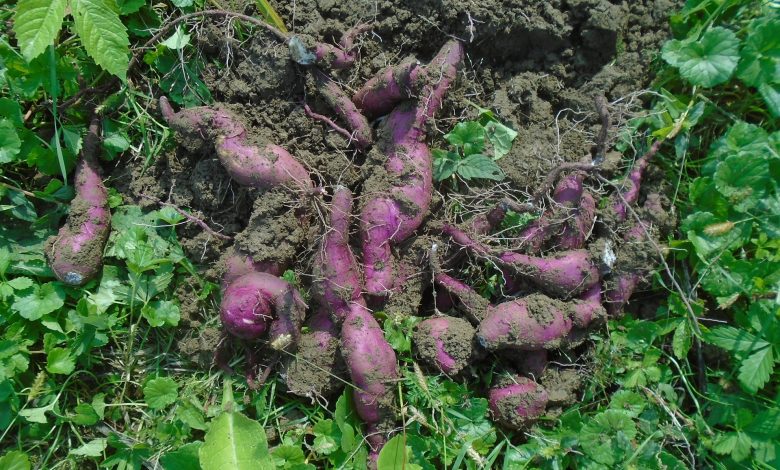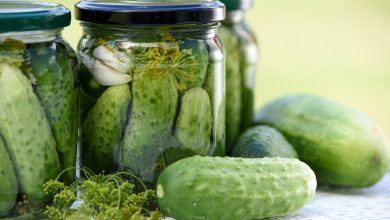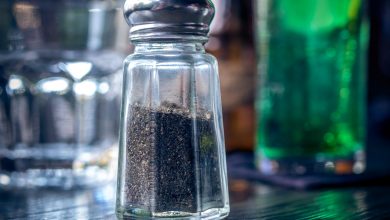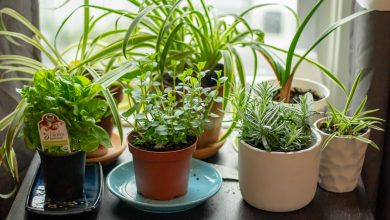How to Grow Sweet Potatoes

Whether in a container, on a fence, or in the garden, sweet potatoes can grow anywhere, including the most miserable conditions, with just a little bit of tender love and care. These tubers are beautiful plants that also have lovely flowers and foliage during the fall season.
Sweet potatoes flourish well in a sunny vegetable garden; however, you can also cultivate them in other areas of your garden. You can use them as a trailing houseplant or as a temporary groundcover. In a patio space, the potato vines will create a beautiful foliage plant that you can harvest edible roots from during the fall.
These delicious tubers grow all around the globe, from stuffy and humid tropical climates, to temperate regions. Their flesh can actually be categorized as either dry or moist. Moist, deep orange variants, also known as yams, are more prevalent among home gardeners, especially the Georgia Jet and Centennial varieties.
These tasty potatoes are also amazingly versatile and nutritious; its fleshy roots are abundant in vitamins A and C, as well as other nutritional minerals. You can bake them, boil them, eat them raw, and even use them for baking bread, making desserts, and cooking stir-fries, casseroles, or soups. You can use sweet potatoes in the making of just about any type of dish, including some mouth-watering home-made potato fries!

The History Behind These Tubers
Sweet potatoes have been around for more than just a couple of years. These domesticated warm-weather crops were found in South and Central America over five centuries ago. They loved potatoes, and they definitely shared that love with others. As such, they ended up being cultivated all over the world in Australia, Africa, Europe, and even Asia.
In 1492, some members of the Columbus’ expedition were considered the 1st Europeans to try these delicious potatoes when they arrived in Haiti. Today, the majority of the world can enjoy these delicious and nutritious tubers coming straight from their gardens and right into their kitchen.
The several variants of sweet potatoes and yams found in markets and grocery stores around the U.S. are typically the same kinds of the “Ipomoea Batatas” grown centuries ago. “Batatas” is the term that the native inhabitants of Haiti called these wonder-crops when Columbus landed. Spaniards later then coined the term “patatas,” and when later presented with the common potato, they decided to do away with any potential linguistic confusion and name them “patatas” as well.
Currently, they are known as sweet potatoes since they bear a striking resemblance to a common potato; however, “ipomoea” was its first true name of sorts.
Summary
Scientific Name:
Ipomoea batatas
Common Name:
Sweet Potato, Yam
Plant Variety:
The majority of variants are perennial, but they are cultivated as an annual vegetable
Mature Size:
Vines ~ 20 ft | Tubers ~ 4 – 6 inches
Sunlight Exposure:
Full sunlight – moderate shade
Soil:
Slightly Acidic Soil
Soil pH:
5 – 6.5
Blooming Period:
3 – 4 months from planting
Flower Color:
White, Pale to Deep Lavender
Hardiness:
8 – 11
Native Locations:
Tropical/Central/South Americas

Popular Varieties
The different types of sweet potatoes can be categorized according to the texture and color of their flesh and foliage. All ornamental selections that can be found in local garden centers have nutritious and edible leaves, alongside the edible tubers themselves, making them an excellent choice for a wholly edible gardening project.
And the wide variety of foliage colors ranging from a deep green to a stunning purple also makes for a perfect pop of color in your garden. As we’ve mentioned – all varieties of sweet potatoes are edible. However, some of them are sold for their tasty roots, others for the aesthetic value of their beautiful foliage, while some are grown specifically for their tender, savory greens.
Here is a general overview of the most common types of sweet potatoes:
- Beauregard: This common commercial type yields a potato with pale reddish skin and dark orange flesh that takes 90 – 100 days until it reaches maturity.
- Bush Porto Rico: This is a more compact variant that produces a potato with orange flesh and copper-colored skin after roughly 110 days. It’s a great choice for smaller gardens since it has relatively sizable yields, without needing much space to grow.
- Centennial: This kind has impressive disease resistance and reaches maturity a little faster than most of its cousins. It takes around 90 days for it to be ready to harvest.
- Georgia Jet: This variety is an excellent option for shorter growing seasons because it only takes 90 days to mature, just like the Centennial. It has orange flesh and reddish skin and grows well in soil that contains lots of clay.
- Ginseng: This variety has pale orange skin and orange flesh. It has a dry texture but boasts a rich and delicious flavor. It takes longer to harvest, averaging 120 days to fully mature.
- Hernandez: Similar to the Ginseng, it takes longer to harvest since it takes 120 days to reach full maturity. However, it yields incredibly large harvests due to how vigorously it grows. In fact, it’s not uncommon to see some “football-sized” potatoes with this variant.
- Red Japanese: Akin to it’s name, it has red skin with white flesh. It’s one of the more prevalent types found in Asian supermarkets. If watered well, they produce a good yield with nearly little to no additional maintenance. Another benefit to growing the Red Japanese is that it only takes 95 days to fully mature and be ready for harvesting.
- Okinawa Purple: It has creeping vines and has a very late maturity period. It has light beige skin with deep purple flesh.
- White Hayman: This variety is similar to the widely known “Irish Potatoes,” though it adds a sweet and deep flavor into the mix. It has cream-colored skin with white flesh. Its flesh turns more yellow when cooked and has a rich and starchy flavor. It takes around 100 days to reach its maturity.
- O’Henry: This variety is one of the earliest producers in the sweet potato family. It has a soft and creamy taste. Its skin and flesh are both white.
- Okinawan: This is another Asian variety with pale purple skin and purple flesh. It has trailing vines and blooms very late into the growing season.
Basic Essentials

Fertilizer
Before planting your vegetables, add a bit of compost to the beds. If your veggies aren’t fed properly, your harvest will dwindle, and you may end up with little to no tubers at the end of the season.
Light
Make sure to cultivate your potatoes in full sunlight to partial shade. They typically grow well in full sun but enjoy some afternoon shade in dry and hot places.
Soil
Plant them in soil that is rich in organic matter, and then leave them to their own devices. To provide a head start, they are often grown in raised rows, specifically eight inches high. This approach keeps the soil warm and ensures good drainage for your growing tubers. For colder climates, you can cover your plot with black plastic to help create a warmer micro-climate for planting.
Temperature and Humidity
Unless the temperature of the soil has warmed to around 60 degrees Fahrenheit, yams shouldn’t be planted outdoors. Ideally, you’d want to plant them in soil with temperatures ranging from 60 – 85 degrees Fahrenheit, with an air circulation temperature of 65 – 95 degrees.
Water
Once the garden site is taken care of, potatoes grow well in dryer soil. However, it is ideal to maintain some moisture by giving your tubers roughly an inch of water once per week. But avoid watering your vegetables during the final three to four weeks before harvesting to keep the mature tubers from splitting open.
Timing
The perfect time of the year to grow sweet potatoes in the U.S. is from March to June, similar to planting okras in your vegetable garden. Both of these plants absolutely love the hot summer days.

Soil Requirements
As described, the most important initial requirement for planting potatoes is warm soil. They do not flourish in frosty climates, as they don’t do well at temperatures below 60 degrees Fahrenheit.
Another important thing to consider when growing these vegetables is that they need a roomy and loose soil to make it easier for them to take root once planted.
They grow best in fertile and well-drained soil; however, they’re really not all that picky and can grow even in relatively deprived environments. But if the nutrient balance is off or the soil isn’t all that great, your potatoes will likely have little to no culinary value since they won’t be that big or tasty once harvested.
Another important factor to consider before you get planting is your soil pH. For delicious sweet potatoes, a pH of 5.5 – 6.5 is going to be the best fit.
How To Plant Sweet Potatoes
Unlike many other veggies, sweet potatoes are grown from slips instead of seedlings. These slips are the sprouts that grow on mature tubers that have been removed from the potato and have also been rooted in water. You can either make the slips yourself from freshly harvested yams or pick them up at a farm or a local gardening store.
Steps For Planting Your Tubers:
- Prepare and root your slips.
- Dig a relatively shallow hole in the soil, around three inches in diameter and five inches deep, leaving around 18 – 24 inches of space between holes in the same row.
- Place a slip into each hole that you dug earlier. You should try to plant it so that there are two to four leaves that can still be seen above the ground. For the first couple of weeks, the slip will gradually start to take root in the soil.
- Cover the opening of each hole with soil so that the slips are not exposed. Make sure that you don’t compact the soil too much so that water can still flow freely to the roots.
Maintenance

Watering
Sweet potatoes grow well in dryer ground. The potatoes themselves act as an organ that stores water and nutrients for the entire plant, so you can get away with watering them much less than you would with other veggies. However, if you don’t water them enough – the tubers won’t be as tasty or as big as they should be.
You should water them daily for the first week after planting them and then gradually cut back the amount of water throughout the season.
Feeding
Sweet potatoes don’t generally need to be fertilized during the growing period since they’re a natural, bio-dynamic nutrient accumulator. However, it is important to make sure that you’ve got the right soil conditions in place before you plant your crop. You want to aim at a good pH while also making sure that your soil has enough phosphorous and nitrogen content. For slightly more vigorous types of sweet potatoes, you may want to occasionally feed them with a little bit of liquid organic fertilizer or compost.
But remember that too much nitrogen will lead to way too much growth. So unless you want your entire garden to be covered in potato vines – don’t go overboard. This could also attract aphids, beetles, crickets, caterpillars, and other insects that want to chow down on the budding vines, in turn, leading to an infestation across your entire plot. So in a nutshell, feeding your growing tubers is a good idea, but should only be done when necessary.
Maintenance
Similar to feeding these plants, your pruning efforts should be very moderate. If you see the vines of your plants escaping their bed and starting to creep up on other areas, you can pick them up and position them back in the confines of their growing space. However, don’t leave stray vines alone for too long, as they grow pretty quickly and might start to invade some of their neighboring plant-life in the blink of an eye.
Mulching
Some vegetable gardeners opt for having two to three inches of layered wood chips as a surface cover for sweet potatoes. The chips act as mulch and keep the moisture in place and distributed evenly, while simultaneously offering a gradual supply of nutrients as they start to decompose and mix with your soil. It’s also essential to have a decent amount of compost below the wood chips as well to make sure that the plants are not deprived of nitrogen.
An extra advantage to this take on mulching is that the tubers generally grow not far from the surface, just below the chips. It’s as easy as reaching down, through the mulch, and pulling up a potato for a totally delicious meal! And moreover, it also helps you reduce the need for cultivating your crop, as there will be far fewer weeds. Your harvest will grow in peace, and you’ll end up with a plentiful bunch of delicious sweet potatoes for only a tiny bit of extra work.
Harvesting Period
Sweet potatoes require three to four months for your harvest to reach full maturity. This time-frame can also differ based on the type of sweet potato you’re growing, so it’s important to take that into account. It’s also important not to harvest too late, as by that time your vegetables will start to harden and attract pests. As soon as your potatoes have matured, you can start digging them up as soon as they’re big enough to eat.
Another good visual indicator for when you can start harvesting is when the leaves start to turn yellow. Though, according to some experts, with certain varieties, you should wait until the first frost hits and the leaves turn black instead.

How To Harvest And Store Sweet Potatoes
The first step is to cut the sprawling vines back to a six inch shrub, which enables you to have ample space and a point of origin for your digging. The majority of the potatoes will be roughly four to six inches deep in the ground, with some rare outliers that may have dug deeper as they grew. Keep in mind that, if your sweet potatoes are on a small hill or raised bed, they are much easier to dig out once the season’s over.
Avoid using a shovel to dig out your tubers since you might mistakenly slice through them. A sound alternative for harvesting them would be a broad fork or spading fork. Before you get digging, remove the dirt in a wide berth around the plant’s crown, which should offer enough space around the roots for you to dig up the potatoes without damaging them. Then, carefully lift the plant and dig up the tubers using your bare hands since they easily bruise.
After digging them up, remove any excess dirt by brushing it off. However, don’t wash them just yet, as they will quickly start to mold and rot if you do. And when it comes to harvesting the leaves, you can do it throughout practically the entire season up until the colder temperatures start to kick in. However, if you pick off a little too much foliage, you may end up with diminished potato harvest at the end of the growing season – so remember to exercise a bit of moderation there.
Curing
Sweet potatoes need to be cured for seven to fourteen days after you dig them up. During this time, the starch content in your potatoes will gradually turn into sugar, adding a sweet and pleasant flavor to the already delicious tubers. After harvesting, washing, and drying them, the potatoes should be stored in a room with a temperature of 85 – 90 degrees Fahrenheit with a relative humidity of around 85 percent.
Storing
After you cure your harvest, sort the tubers and throw out the ones that are bruised, molding, or sprouting. You can store them in some sand or wrap the potatoes in some breathable paper or newspaper and store them in a basket or box for longer periods of time. They can easily be kept in a garage, pantry, basement or cellar.
The best temperatures for long-term storage would be anywhere between 55 – 60 degrees Fahrenheit. Storing them this way will also helps improve the taste of your sweet potatoes. But be careful, if you’re storing them in temperatures below 55 degrees – the central part of the potatoes may develop white spots and harden up over time.
On the other hand, if the temperature is above 60 degrees, sweet potatoes may soften and shrink and begin to sprout. To avoid this, we recommend putting an apple into each box of sweet potatoes that you’re planning to store. This helps because of the apple’s ethylene gas that acts as a growth suppressant.
If you need to store your harvest for longer periods, the potatoes should be sliced or diced and cooked before storage. Freezing, roasting and slicing potatoes are some of the best long-term ways to keep them fresh and ready for consumption at a moment’s notice.



